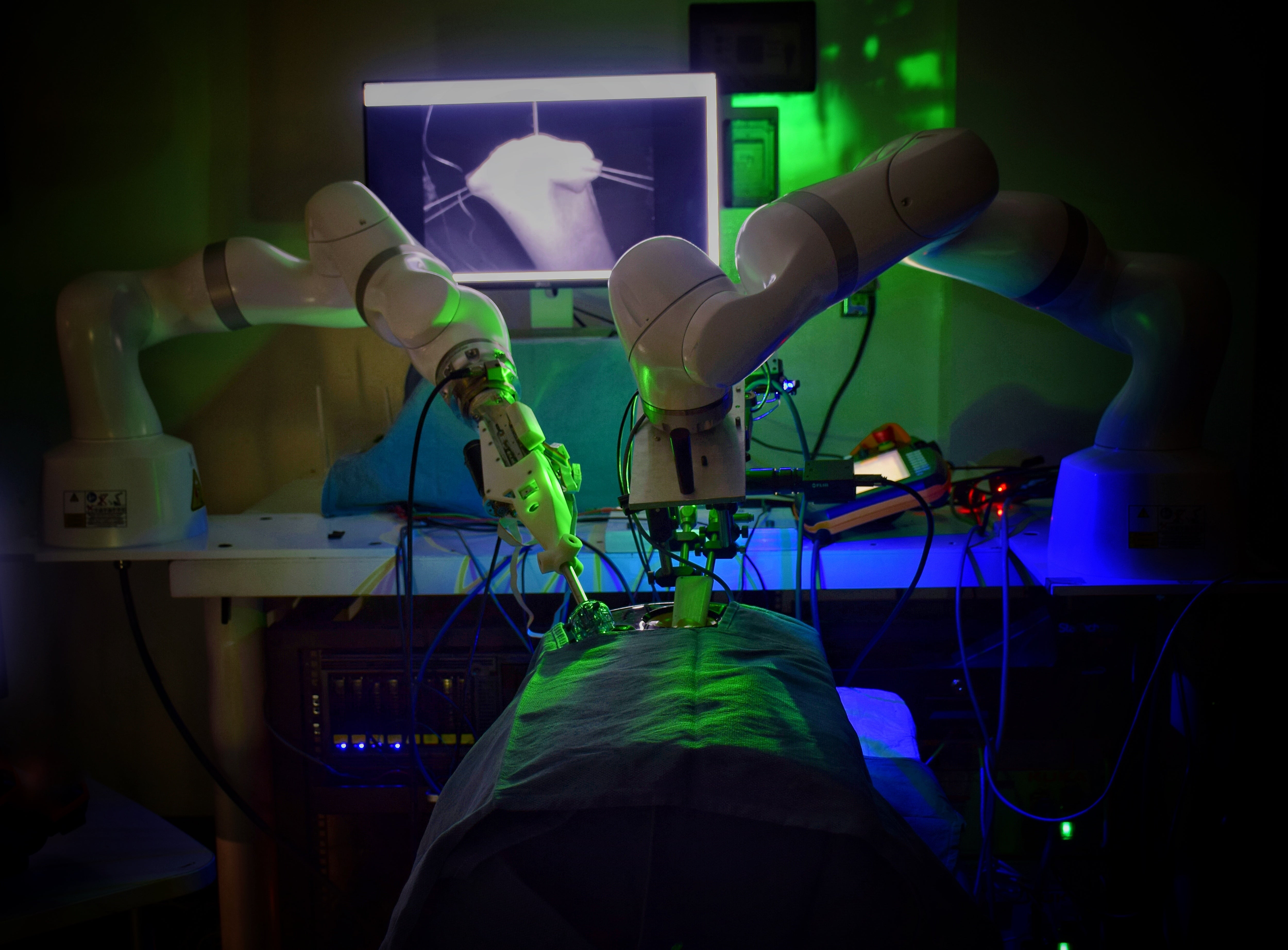Robot performs surgery without help from humans

Your support helps us to tell the story
From reproductive rights to climate change to Big Tech, The Independent is on the ground when the story is developing. Whether it's investigating the financials of Elon Musk's pro-Trump PAC or producing our latest documentary, 'The A Word', which shines a light on the American women fighting for reproductive rights, we know how important it is to parse out the facts from the messaging.
At such a critical moment in US history, we need reporters on the ground. Your donation allows us to keep sending journalists to speak to both sides of the story.
The Independent is trusted by Americans across the entire political spectrum. And unlike many other quality news outlets, we choose not to lock Americans out of our reporting and analysis with paywalls. We believe quality journalism should be available to everyone, paid for by those who can afford it.
Your support makes all the difference.A robot has operated on a pig without human help.
The machine successfully performed keyhole surgery on a pig, attaching organs in a range of different animals.
And it did so without the help of a human, for the first time.
Scientists hope that it can help bring about fully automated operations on humans by similar robotic systems.
The Smart Tissue Autonomous Robot (Star) carried out the delicate keyhole - laparoscopic - surgery, which involved connecting two ends of an intestine, in four animals.
According to the study, the robot excelled at the procedure which requires a high level of precision and repetitive movements.
Senior author, Dr Axel Krieger from Johns Hopkins University, said the procedure marked the first time a robot had performed a laparoscopic surgery without human help.
Connecting two ends of an intestine is arguably the most challenging step in gastrointestinal surgery, requiring a surgeon to apply stitches - or sutures - with high accuracy and consistency, experts say.
The slightest hand tremor or misplaced stitch can result in a leak that could have catastrophic complications for the patient.
Dr Krieger, an assistant professor of mechanical engineering at Johns Hopkins’ Whiting School of Engineering, said: “Our findings show that we can automate one of the most intricate and delicate tasks in surgery: the reconnection of two ends of an intestine.
“The Star performed the procedure in four animals and it produced significantly better results than humans performing the same procedure.”
He helped create the robot, a vision-guided system designed specifically to suture soft tissue, with colleagues at the Children’s National Hospital in Washington DC and Jin Kang.
Dr Krieger is a Johns Hopkins professor of electrical and computer engineering.
The current version improves a 2016 model that repaired a pig’s intestines, but required a large incision to access the intestine and more guidance from humans.
Expert say the new features allow for improved surgical precision, including specialised suturing tools and imaging systems that provide more accurate visualisations of the surgical field.
It is especially hard for robots to perform soft-tissue surgery because of how unpredictable it is, forcing them to be able to adapt quickly to handle unexpected obstacles.
The study sets out a novel control system in the Star that can adjust the surgical plan in real time, just as a human surgeon would.
Dr Krieger said: “What makes the Star special is that it is the first robotic system to plan, adapt, and execute a surgical plan in soft tissue with minimal human intervention.”
He added: “Robotic anastomosis (surgically joining two structures) is one way to ensure that surgical tasks that require high precision and repeatability can be performed with more accuracy and precision in every patient independent of surgeon skill.
“We hypothesise that this will result in a democratised surgical approach to patient care with more predictable and consistent patient outcomes.”
The findings are published in Science Robotics.
Additional reporting by Press Association
Join our commenting forum
Join thought-provoking conversations, follow other Independent readers and see their replies
Comments